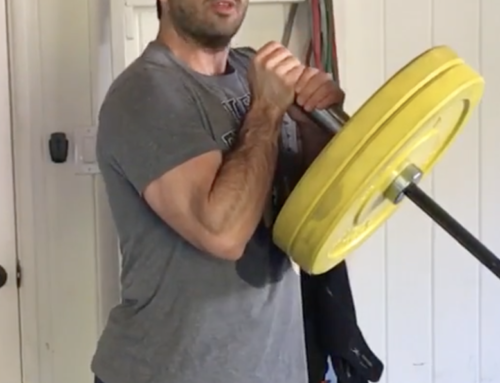Basketball Off-Season Strength & Conditioning – Part 2
Mike Robertson, Robertson Training Systems
In part 1, I talked about the 3 blocks/phases of how a typical 12-week off-season training period may look. If you haven’t already read that article, make sure you check it out.
What should you do within each of those blocks?
Let’s say a coach has 3 one-hour blocks a week for their team to train. How do you structure that? Maybe it’s even a little bit more than an hour, maybe it’s a little bit less but in terms of a general structure – how do you approach the format of that workout, what do you do?
I’m a big believer that if it’s important you have to train it, and you have to train it often.
What we’ve actually created at our gym we call it the R7 approach to program design. There are basically seven Rs to every training session:
R-1 is release: so that you’re from rolling or any soft tissue work that you might do.
R-2 are our resets: these are positional breathing exercises or exercises that are meant to essentially restore a better position of the body.
R-3 is our readiness: that’s just a standard warm-up, getting somebody ready to train.
R-4 is reactive: that’s our explosive, our power, or quickness (anything that is getting our athlete quicker, faster, more explosive).
R-5 is our resistance training: just lifting weights.
R-6 is resiliency: that’s our conditioning.
R-7 is recovery: hat’s any like recovery breathing any cooldown methods we might use.
Those are like checkboxes. I’m trying to check as many of those boxes as I can every session.
A typical training session may go as follows:
When an athlete comes in, they might go through R1, R2, and R3 – that’s their warm up. That may take 10-12 minutes. Those 12 minutes get them loosened up, do a couple resets get them moving. Then we’ll go right speed and agility work (R-4) and that may be 10-15 minutes it depends on the phase and the athlete(s) we’re working with. Now, you’re looking at, 20-25 minutes into the workout, so now we’re going to transition into the weight room. We’re going to do our resistance training (R-5) which generally in an hour block, it mainly only be 20 minutes. It’s probably going to be pretty condensed. Maybe we’re going to do a squat or a hinge, and we might follow that up with a push or pull, and then maybe we will do an ab exercise to finish things off.
Last but not least, we’re going to get a little bit of conditioning in. Generally, if they’re in the gym with me and it’s a higher intensity day, we’re going to do some form of higher intensity conditioning: could be pushing a prowler, it could be doing fast defensive slides intervals (5-6 seconds on with 40,50,60 seconds off). Big emphasis on being fast and being explosive – especially early in the offseason. Make sure the athletes are taking longer for recovery. This ensures that those reps are fast and explosive. *
As we get closer and closer to the season we really start to tighten up those work to rest ratios. Also, I get lots of questions about steady-state conditioning/running: there is a time and a place for a long duration low-intensity stuff. Generally, if I’m going to do stuff like that, that’s going to be a separate workout on off days.
Finally, before they go we’ll spend 2-3 minutes and I’m going to have them do some sort of recovery breathing exercise. It could be as simple as lean next to a wall (buttocks up against the wall), their feet are up on the wall and just banging out 8-10 really good breaths to try and help them chill out and relax so that we kick start that recovery process before they leave the gym.
If you’ve got an hour, three times a week it’s going to look something like that and it’s going to be intense, it’s going to be a pretty fast paced, but also a really high-quality session where we touch on a lot of different things.
Mike Robertson is the President of Robertson Training Systems and the co-owner of Indianapolis Fitness and Sports Training (I-FAST) in Indianapolis, Indiana. Mike has made a name for himself as one of the premier performance coaches in the world, helping clients and athletes from all walks of life achieve their physique and sports performance goals. Mike has worked with a vast variety of athletes and basketball players ranging from youth through professional. In addition, Mike has been involved with the IYCA (International Youth Conditioning Association) both on an advisory level and as a speaker at seminars.







Leave A Comment